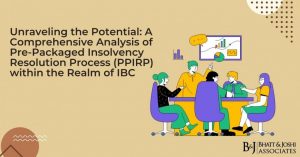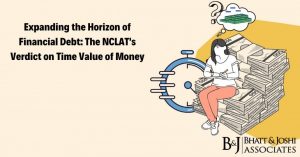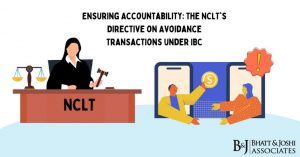SECTION 29A OF IBC 2016
The most contentious portion of the IBC is Article 29A. It was revised several times to correct the inaccuracies. Section 29A discusses the circumstances under which a person is disqualified to apply for a resolution.
Here’s how section 29A is interpreted in its entirety:
“A person shall not be qualified to submit a resolution plan if such person, or any other person acting jointly or in concert with such person—

Here, the word ‘acting jointly or in concert’ indicates two or more individuals working together as a group,” according to Section 29. In the prominent case ARCELOR MITTAL INDIA (P.) LTD. v. SATISH KUMAR GUPTA, the Supreme Court ruled that the phrase “acting jointly” in Section 29A’s first line should not be confused with “joint venture agreements.” It does not imply that a group of people have banded together and are acting “jointly” in the sense of collaborating.
a. is an undischarged insolvent;
An undischarged Insolvent is a person or company who has filed a bankruptcy petition with the court of law and is still undergoing insolvency proceedings.
b. is a willful defaulter under the Reserve Bank of India’s recommendations provided under the Banking Regulation Act, 1949 (10 of 1949);
According to the RBI’s Master Circular (under the Banking Regulation Act, 1949), a Willful Defaulter is a borrower who does not meet his obligations even when he has the ability to do so, and does not use the funds for the specific purpose of which they were borrowed, redistributes the funds neither for the purpose for which they were borrowed nor in another form of assets, and disposes of the property or assets which were provided for fraudulent transactions and fabrication of reports, and securing the loan without the lender’s knowledge.
c. Or a corporate debtor account under such person’s supervision or control, or of which such person is a promoter, designated as a non-performing asset in accordance with Reserve Bank of India recommendations issued under the Banking Regulation Act, 1949 (10 of 1949) [or the instructions of a financial sector regulator issued under any other law now in force,] and a period of at least one year has elapsed between the date of such categorization and the start of the corporate debtor’s insolvency resolution process:
This simply means that an insolvent entity whose accounts are classified as Non-Performing Assets is ineligible to be a resolution applicant if it has been unable to settle overdue amounts including interest and charges relating to the account for one or more years prior to the submission of the resolution plan.
“Section 29A(c) is a see-through provision,” Justice Nariman continued, “and considerable care must be taken to ensure that those in command of the corporate debtor do not return in some other form to recover control of the firm without first paying off its debts.”
Provided, however, that a person is qualified to submit a resolution plan provided he or she pays all past-due sums, including interest and penalties, and charges pertaining to non-performing asset accounts before submitting a resolution plan. Furthermore, nothing in this article applies to a resolution applicant who is a financial company and is not a linked party to the corporate debtor.
d. Has been convicted of any crime that carries a term of imprisonment –
(i) for a period of two years or more under any Act listed in the Twelfth Schedule; or
(ii) for a period of two years or more under any Act listed in the Twelfth Schedule (For a period of seven years or longer under any current law:
The ineligibility does not apply to “connected people,” who include the prospective acquirer’s holding company, subsidiary company, associate business, or any associated party, the acquirer’s promoters, the acquirer’s board, and the corporate debtor’s proposed management or promoters. This criterion, on the other hand, would not apply to a resolution applicant who is a financial company and not a connected party of the corporate debtor.
e. is barred from serving as a director under the Companies Act of 2013 (18 of 2013):
His/her case is pending in court on insolvency or unsoundness of mind; he/she has been sentenced to 6 months in prison for an offense involving moral turpitude; an order has been issued by the court/tribunal declaring him disqualified; he/she has been convicted of offenses involving related party transactions (under section 188 of the Companies Act,2013).
f. is forbidden from dealing in securities or accessing the securities markets by the Securities and Exchange Board of India;
Every person is forbidden from buying, selling, or dealing in securities in a dishonest way under sections 3 and 4 of the Prohibition of Fraudulent and Unfair Trade Practices relating to Securities Markets) Regulations, 2003. Defrauding on the issuance of securities that are listed or intended to be listed on a recognized stock market, trading in securities fraudulently or via an unfair trading practice, and so on
g. has been a promoter or in the management or control of a corporate debtor in which a preferential transaction, undervalued transaction, extortionate credit transaction, or fraudulent transaction has taken place and in respect of which an order has been made by the Adjudicating Authority under this Code:
This ineligibility kicks in when a corporate debtor’s promoter (or someone in charge of them) engages in preferential deals, undervalued transactions, extortionate credit transactions, or fraudulent transactions. This sub-clause refers to a person who has positive control over a corporate debtor; only that person has the authority to make the dynamic decisions outlined in the sub-clause (g).
h. has executed a guarantee in favor of a creditor in respect of a corporate debtor against which an application for insolvency resolution made by such creditor has been admitted under this Code 5 and such guarantee has been invoked by the creditor and remains unpaid in full or part
When an individual signs a guarantee for an insolvent corporate debtor they become ineligible. This provision was considered in the case of RBL BANK LTD. VS. MBL INFRASTRUCTURES Ltd., and it was decided that the guarantee should not be restricted in circumstances where a creditor has not invoked the guarantee or filed a claim.
i. [is] subject to any handicap under any legislation in a jurisdiction outside India, similar to paragraphs (a) to (h); or
Any ineligibility resulting from the above-mentioned phrase shall be enforceable under any Indian or international law.
j. Has a related individual who is not eligible under sections (a) to (i).
CAN PROMOTERS OF MSME SUBMIT A RESOLUTION PLAN UNDER IBC?
What is MSME?
Micro enterprises would be defined as manufacturing and service businesses with investments of up to Rs 1 crore and a sales of up to Rs 5 crore under the new definition. The investment standards for small businesses have been raised to Rs 10 crore, with a new turnover requirement of Rs 50 crore added to the mix. Businesses with a capital investment of up to Rs 20 crore and a revenue of up to Rs 100 crore will be eligible as medium enterprises.
MSMEs can submit resolution plans through the CIRP process provided they meet the qualifying requirements set forth in Section 29A of the IBC, with the exception of the restrictions set forth in clauses (c) and (h) of the IBC (Section 240A of IBC).
The Ordinance extends the advantage of these exemptions to MSMEs applying under the Pre-Packaged insolvency resolution process as well. This is in stark contrast to the stance taken by the majority of the Sub-Committee of the Insolvency Law Committee on Pre-packaged Insolvency Resolution Process wherein it was recommended that the immunity under Section 29A to promoters with NPAs must not be given. The majority reasoned that granting such an exception to the promoters would undermine the purpose of Section 29A. Allowing promoters with NPA accounts to submit resolution plans would undermine the aim of the corporate debtor’s resurrection.
The Ordinance, however, continued to grant this exception to MSMEs filing for the Pre-Packaged Resolution Process, allowing promoters with NPAs to participate in the resolution process as well.
Applicability of Prepacks:
- MSMEs only, as per the definition under MSMED Act
- Actual Default by MSME Corporate Debtor (CD)
- Minimum Threshold Default of Rs. 10 Lacs by MSME (CD)
When and by who should pre-packs be used?
A pre-pack can be launched if members of the MSME have accepted the idea by a special resolution. In addition, a pre-pack settlement must have been agreed to by 66 percent of unrelated financial creditors by value.
There are penalties if a pre-pack phase is begun with the aim to deceive, or if MSME manages the affairs in such a manner that the creditors are deceived.
How Does the Procedure Work?
There will be a moratorium while the pre-pack phase is ongoing. The treatment must be finished within 120 days. Throughout the process, the MSME’s promoters and directors will continue to oversee and supervise the firm. The resolution specialist will keep an eye on the company’s management of affairs.
With a 66 percent majority, the committee of creditors will entrust the administration with the resolution professional after getting judicial clearance. If the MSME meets the requirements of Section 29A, it must submit a base resolution plan to the resolution expert.
Resolution Plan Approval
If the MSME’s plan is rejected by the Committee of Creditors (CoC) or if operation creditors’ dues are impacted, the resolution expert will ask potential applicants to submit a competing proposal. 66 percent of financial creditors by value will accept the proposal after analyzing its feasibility and profitability. The CoC must also evaluate the proposed mode of distribution, taking into consideration the precedence of creditors and the priority and significance of a secured creditor’s security interest. The CoC has the authority to order the promoters of the corporate debtor to decrease their shareholdings, voting rights, or control rights.
There is a commercial rationale for relaxing the Section 29A pre-package obligation. The insolvency procedure has been particularly contentious due to the direct confrontation between promoters and creditors’ interests. Pre-packs aren’t designed to be a fixed, mandatory basis for resolving pre-insolvency situations.
References:
- https://www.ibbi.gov.in/uploads/order/d46a64719856fa6a2805d731a0edaaa7.pdf.
- https://www.sebi.gov.in/acts/futpfinal.html#%3A~%3Atext%3D(1)%20These%20regulations%20may%20be%2Cpublication%20in%20the%20Official%20Gazette.
- http://ibbi.gov.in/webadmin/pdf/order/2017/Dec/18th%20Dec%202017%20in%20the%20matter%20of%20MBL%20Infrastructures%20Limited%20C.P%20(IB)-170-KB-2017%20(Interim%20Order)_2017-12-22%2012:31:15.pdf.
- Report of the Sub-Committee of the Insolvency Law Committee on Pre-packaged Insolvency Resolution Process (October 2020). Available at: “https://ibclaw.in/reports-on-ibc/“.









